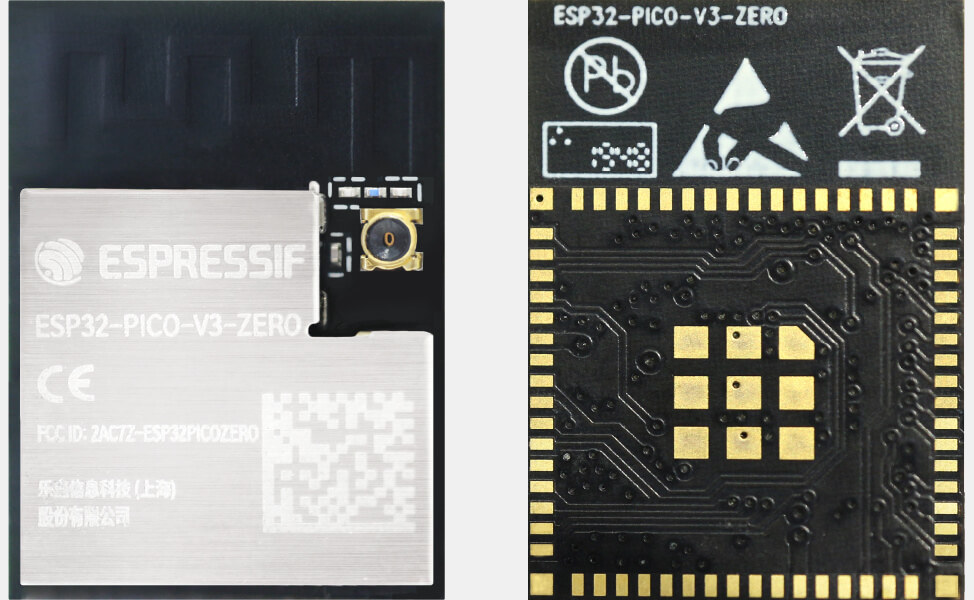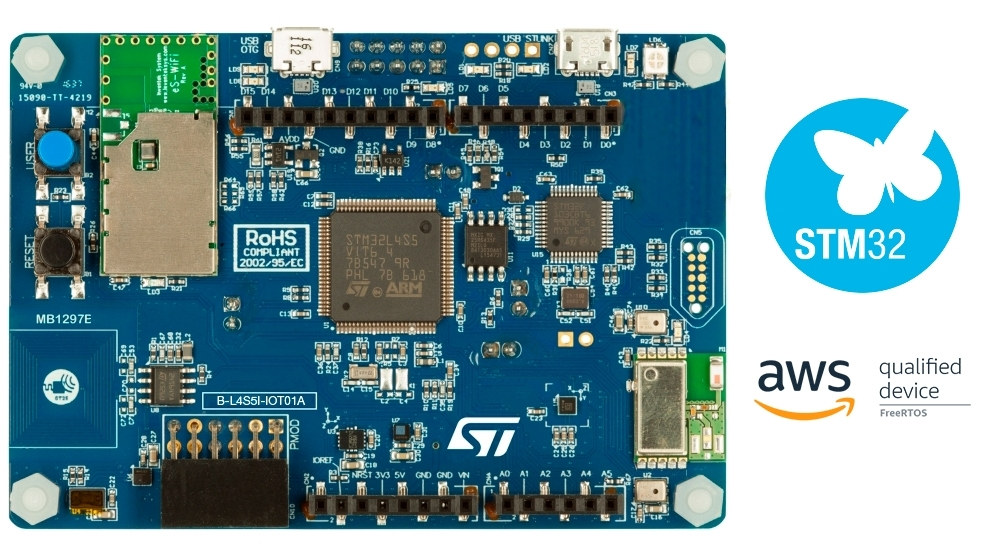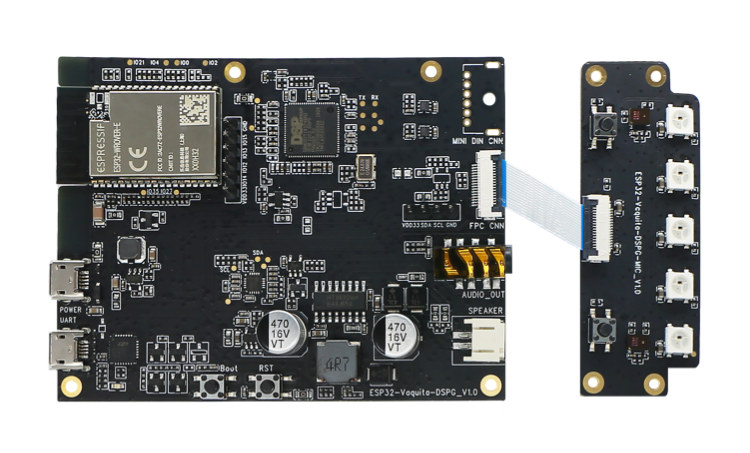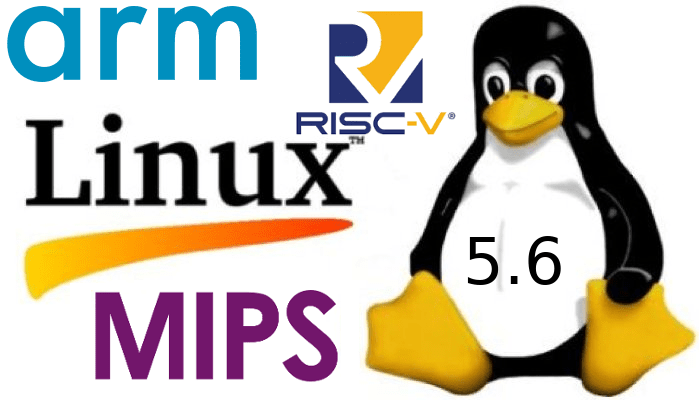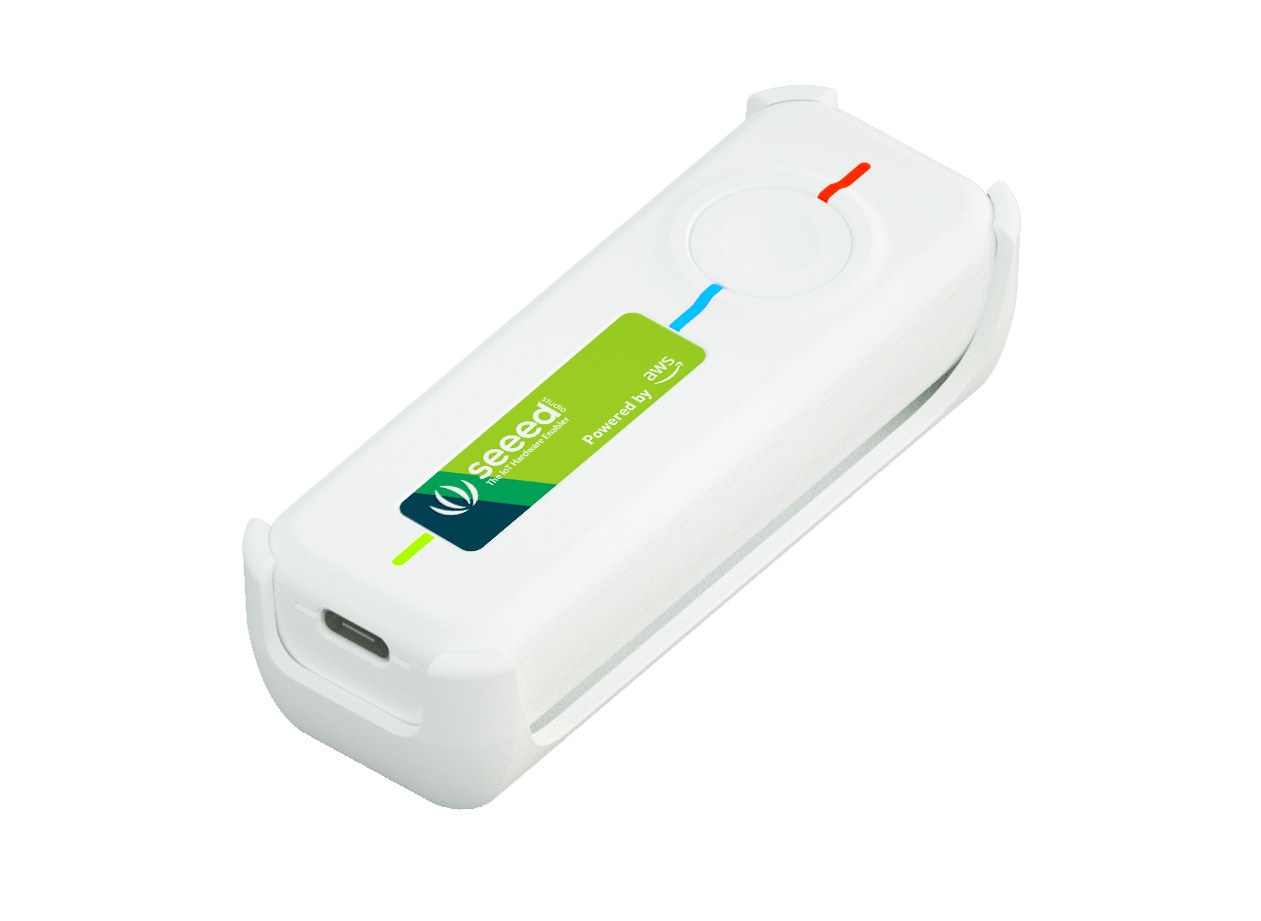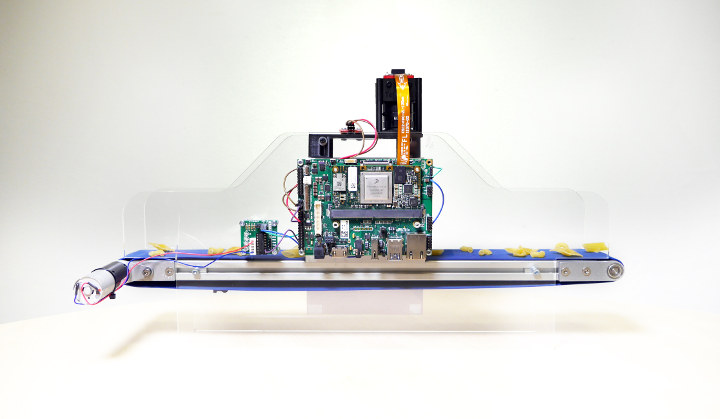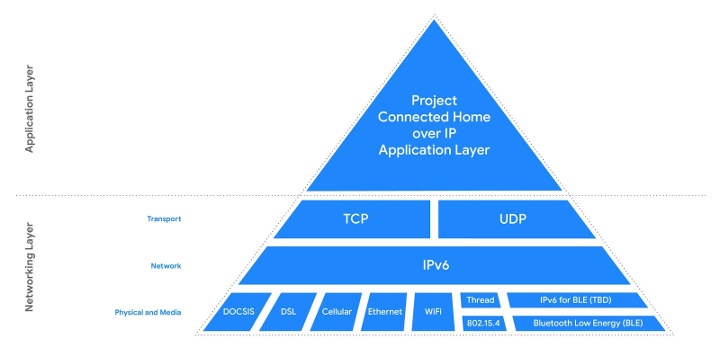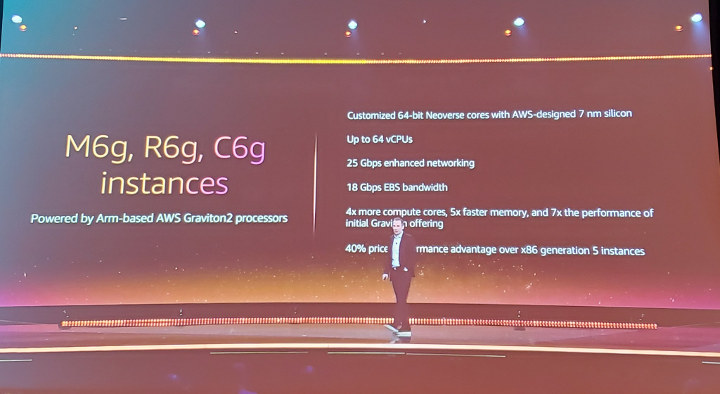Espressif Systems & Amazon have recently announced ESP32-PICO-V3-ZERO Alexa Connect Kit (ACK) module providing out-of-box connectivity to ACK cloud services, support for features such as Alexa control, “Frustration-Free Setup” and Amazon Dash replenishment for connected devices. The tiny (23 x 16 x 2.3mm) module is based on the company’s ESP32-PICO-V3 System-in-Package (SiP) based on ESP32-V3 dual-core Xtensa LX6 WiFI and Bluetooth SoC, a 4 MB SPI flash, a crystal oscillator, filter capacitors, and an RF matching network. The module supports 2.4 GHz 802.11 b/g/n WiFi, Bluetooth, and Bluetooth Low Energy connectivity and comes with a PCB antenna and a u.FL connector to plug in an external antenna [Update: That should be an RF test connector instead, see comments]. ESP32-PICO-V3-ZERO module interfaces to a host MCU through a UART interface, and to speed-up time-to-market the module comes pre-certified for regulatory certifications such as FCC, CE, SRRC, IC, and RCM. The module […]
STM32 IoT Discovery Kit Runs AWS-Ready FreeRTOS, Supports Arduino and Pmod Expansion Boards
STMicroelectronics STM32 IoT Discovery Kit is supposed to ease software development for IoT nodes thanks to a qualified port of FreeRTOS integrated into the STM32Cube ecosystem, and ready to connect to Amazon Web Services (AWS). The hardware is comprised of an STM32L4+ Cortex-M4F microcontroller, various MEMS sensors, a secure element, and offers WiFi, Bluetooth 4.2, and NFC connectivity. STM32 IoT Discovery Kit (B-L4S5I-IOT01A) key features and specifications: MCU – STMicro STM32L4+ (STM32L4S5VIT6) Arm Cortex-M4F microcontroller with 2 MB Flash, 640 KB RAM in LQFP100 package storage – 64 Mbit Quad-SPI Flash Connectivity Bluetooth 4.1 module (STMicro SPBTLE-RF) 802.11 b/g/n compliant Wi-Fi module (Inventek ISM43362-M3G-L44) Dynamic NFC tag based on ST25DV04K with its printed NFC antenna USB – Micro USB OTG port STMicro Sensors 2 digital omnidirectional microphones (MP34DT01) Relative humidity and temperature sensor (HTS221) 3-axis magnetometer (LIS3MDL) 3D accelerometer and 3D gyroscope (LSM6DSL) 260-1260 hPa absolute digital output barometer (LPS22HB) […]
ESP32-Vaquita-DSPG Board and SDK Support Alexa Integration and AWS IoT Core Cloud Service
Espressif Systems has just announced another ESP32 board, namely ESP32-Vaquita-DSPG development kit together with an SDK that supports AVS (Alexa Voice Service) integration with AWS IoT cloud connectivity. ESP32-Vaquita-DSPG specifications: Wireless Module – ESP32-WROVER-E with ESP32-D0WD-V3 WiFi + Bluetooth SoC , 64 Mbit SPI flash and 64 Mbit PSRAM Audio DSP – DSPG DBMD5P Audio SoC with far-field voice recognition using the company’s HDClear algorithms. Power Amplifier for external speakers up to 8W Codec – ES8311 I2S audio codec Speaker connector 3.5mm audio jack 2-mic array on MIC board Debugging – USB-UART port Misc- Mainboard – Power LED, boot & reset buttons MIC board – 5x RGB LEDs, 2x function buttons Power Supply 5V input via USB Power Port 5V-to-3.3V regulator. ESP32-Vaquita-DSPG board needs an external 4-ohm speaker or a pair of headphones for audio output, two USB cables for power and debugging, and a computer running Windows, Linux, or […]
Linux 5.6 Release – Main Changes, Arm, MIPS & RISC-V Architectures
Linus Torvalds has just announced the release of Linux 5.6 on the Linux Kernel Mailing List: So I’ll admit to vacillating between doing this 5.6 release and doing another -rc. This has a bit more changes than I’d like, but they are mostly from davem’s networking fixes pulls, and David feels comfy with them. And I looked over the diff, and none of it looks scary. It’s just slightly more than I’d have preferred at this stage – not doesn’t really seem worth delaying a release over. So about half the diff from the final week is network driver fixlets, and some minor core networking fixes. Another 20% is tooling – mostly bpf and netfilter selftests (but also some perf work). The rest is “misc” – mostly random drivers (gpio, rdma, input) and DTS files. With a smattering of fixes elsewhere (a couple of afs fixes, some vm fixes, etc). […]
Seeed IoT Button for AWS Brings Back Amazon Dash Button to Life for Developers
Amazon introduced $5 dash buttons in 2015 to let consumers purchase regular items such as washing powder by simply pressing a button. Some people hacked them for other purposes, for instance as WiFi logging buttons, but the company eventually stopped selling the buttons in February 2019 and fully killed those at the end of August. Seeed Studio is bringing back Amazon Dash button to life in some ways, with the Seeed IoT Button For AWS Wi-Fi-based, programmable button that deploys the AWS IoT 1-Click service. Seeed IoT Button for AWS hardware specifications: MCU – Dual-core MCU with 20MHz Cortex M0 and 200MHz Cortex M4F (Very likely Realtek RTL8720DN Wireless MCU) Storage – 4MB flash Connectivity – Dual-band Wi-Fi 4 802.11 a/b/g/n (2.4GHz & 5GHz) and Bluetooth 5.0 LE USB – 1x USB Type-C port for charging Misc – Button good for 100,000 cycles, 3x LEDs (red, green, blue) Power Supply […]
Toradex AI Embedded Vision Starter Kit Leverages Amazon Web Services for AI and ML Applications
Toradex, Amazon Web Services (AWS), and NXP Semiconductors collaborated to create the AI Embedded Vision Starter Kit aiming to ease the development of cloud-connected computer vision and machine learning applications in industries such as industrial automation, agriculture, medical equipment, and many more. The AI Embedded Vision Starter Kit includes the following items: Toradex Apalis iMX8 System on Module (SoM) powered by NXP i.MX 8QuadMax applications processor Toradex Ixora Carrier Board Allied Vision Alvium 1500 industrial-grade MIPI CSI-2 camera All required cables and a 12VDC (30W) power supply Full software stack, including source code for running the device as well as for cloud deployment Extensive documentation 50 USD AWS credit The kit will help developers meet the must-have requirements of smart connected devices including secure connectivity, remote monitoring, OTA updates, maximum uptime & reliability, compact form factor, cost-optimized hardware, computer vision and machine learning algorithms optimized for low-power hardware, and more. […]
Project Connected Home over IP (CHIP) Working Group is Backed by Google, Apple, Amazon, and the Zigbee Alliance
Amazon, Apple, Google, and Zigbee Alliance have partnered to create Project Connected Home over IP (CHIP) working group aiming to develop a royalty-free, Smart Home standard to increase compatibility among products, and with security at the forefront. The new standard will be separate from Zigbee 3.0 / Pro, and Zigbee Alliance board member companies such IKEA, Legrand, NXP Semiconductors, Resideo, Samsung SmartThings, Schneider Electric, Signify (formerly Philips Lighting), Silicon Labs, Somfy, and Wulian will also join the CHIP working group and contribute to the project. The standard specified by Project Connected Home over IP will rely on existing technology from the networking layer including TCP/UDP transport protocol, IPv6 network and various physical & media standards such as WiFi, Ethernet, Bluetooth LE, Cellular, 802.15.4 and others. Instead, it will define what happens at the application layer level with the following points of focus: End-to-end data security and privacy among in-home and […]
AWS EC2 6th Gen Instances are 7x Faster thanks to Graviton 2 Arm Neoverse N1 Custom Processor
Last year Amazon introduced their first 64-bit Arm-based ECS2 “A1” instances which were found to deliver up to 45% cost savings over x86 Instances for the right workloads. A few months ago, AWS (Amazon Web Services) provides a new offering with bare-metal A1 instances, and with re:invent 2019 now taking place the company has unveiled AWS ECS2 6th generation Arm instances (which they did not call A2 instances yet) powered by Graviton 2 processor comprised of custom Arm Neoverse N1 cores and promising up to 7x the performance of the original A1 instances. There will be three types of Graviton2-powered EC2 instances with the d suffix indicating NVMe local storage: M6g and M6gd for General Purpose workloads (application servers, mid-size data stores, microservices, and cluster computing) with 1 to 64 vCPUs and up to 256 GB of memory. C6g and C6gd for Compute-Optimized workloads (high-performance computing, video encoding, gaming, and […]


